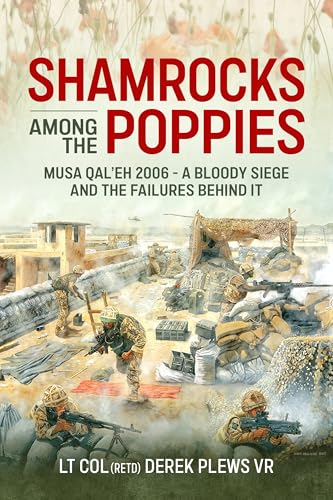
The British Army in Afghanistan 2006–14
by Leigh Neville
"Task Force Helmand"
Popularity
3.44 / 5
* A book's popularity is determined by how it compares to all other books on this website.
Where to buy?
Buy from Amazon* If you buy this book through the link above, we may receive a small commission at no extra cost to you.
The British Army in Afghanistan 2006–14 by Leigh Neville
Details
War:
War in Afghanistan
Perspective:
Infantry
Military Unit:
British Army
True Story:
Yes
Biography:
No
Region:
Middle East
Published Date:
2015
ISBN13:
9781472806758
Description
Brief Summary
The British Army in Afghanistan 2006–14 by Leigh Neville offers a meticulous account of the British military's involvement in Afghanistan during Operation 'Herrick'. This book delves into the complexities and challenges faced by the British troops as they engaged in asymmetric warfare against a tenacious enemy. Covering the period of the longest continuous combat commitment since World War II, the narrative explores how these operations, alongside those in Iraq under Operation 'Telic', have significantly influenced British military strategies and tactics. Through a detailed and connected narrative, Neville provides insights into the evolution of the army's doctrine, techniques, and equipment in response to the shifting threats encountered in the Helmand province.
Main Themes and Topics
The primary theme of the book is the adaptation of the British Army to the multifaceted and evolving nature of warfare in Afghanistan. Neville explores the diverse threats that have emerged over the years, requiring a dynamic shift in both tactical approaches and military equipment. Another significant theme is the cooperation and challenges of working alongside US and NATO forces under the International Security Assistance Force (ISAF). The book thoroughly investigates the strategic decisions and engagements over the eight-year span, providing an operational view of the war theatre.
Writing Style and Tone
Leigh Neville's writing is precise and analytical, reflecting a deep understanding of military operations and strategy. His tone is objective and informative, aiming to present the facts and complexities of British operations in a clear and structured manner. Neville has successfully created a comprehensive and engaging narrative that is accessible to both military enthusiasts and readers with a general interest in modern warfare.
Criticism
While the book is widely praised for its depth and detailed analysis, some readers may find it overwhelmingly technical, with a focus heavily skewed towards military strategies and operations, potentially limiting its appeal to a broader audience. Additionally, the book is dense with information, which might be challenging for those unfamiliar with military jargon or the geopolitical context of the Afghan conflict.









